Ekambareswarar Temple In Tamil Nadu, India Dedicated To Lord Shiva
A. Sutherland - AncientPages.com - Ekambareswarar Temple (Ekambaranathar Temple) is an outstanding Hindu temple dedicated to Lord Shiva, and located in Kanchipuram, an ancient city in southern India's Tamil Nadu state, with a long history and many temples that found their home in this city.
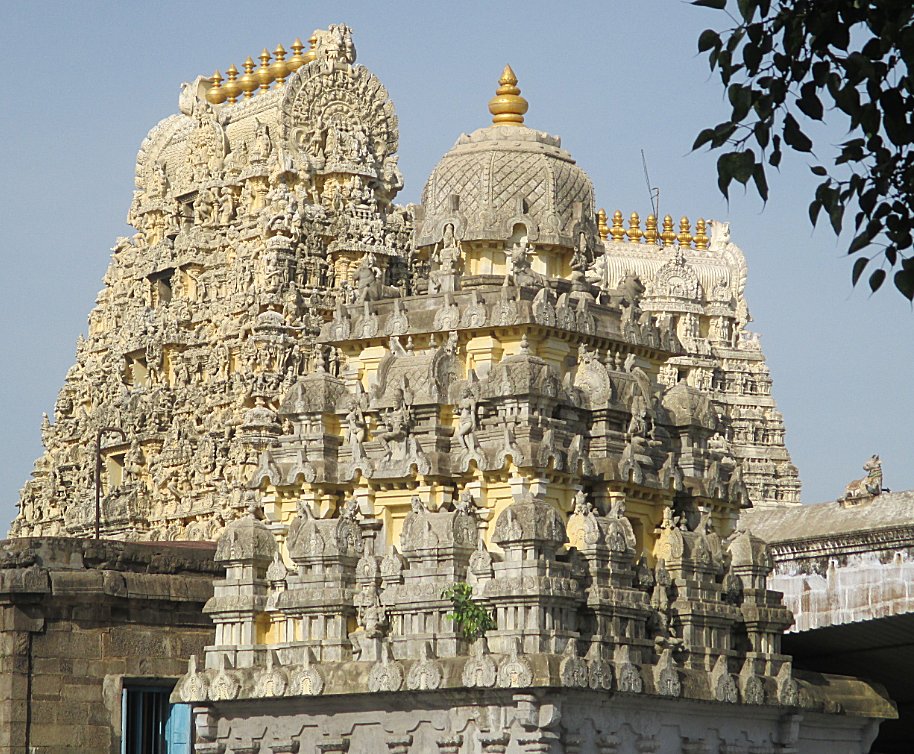 Ekambareswarar Temple - Shrines inside the temple. source.
Ekambareswarar Temple - Shrines inside the temple. source.
Five Elements Of Nature Play Important Role In Temple Architecture
According to Hinduism, life and various species originated by the combination of planetary globes and the five manifestations of nature: earth, water, fire, air, and space.
Pancha Bhoota Sthalam is associated with five temples dedicated to Shiva. Each of them symbolizes these five prime elements of nature. It's worth noting that Pancha indicates "five," Bhoota means "elements," and Sthala means "place." Four temples are located in Tamil Nadu, South India, and one is in Andhra Pradesh.
The five elements are believed to be enshrined in the five lingams of the temples, with each Lingam named based on the element represented.
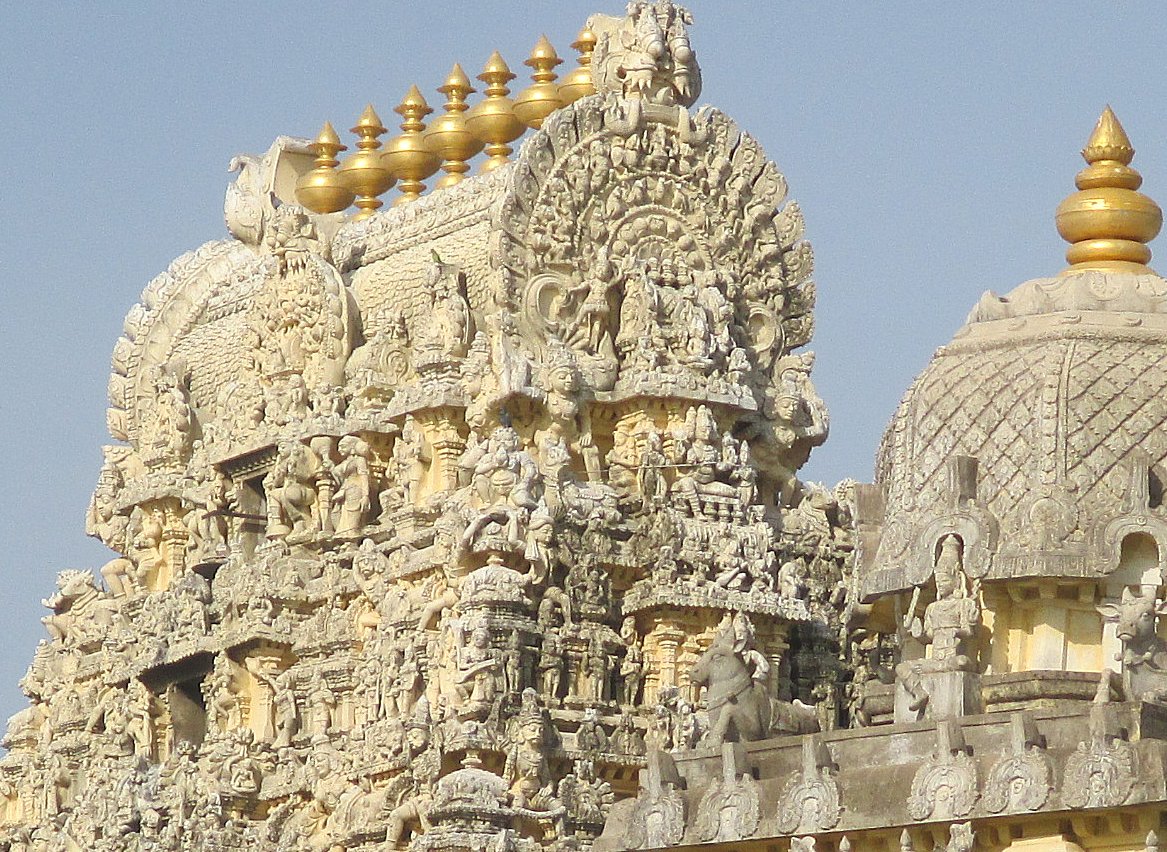 The Ekambareswarar Temple represents one of nature’s five elements - 'Earth'. source.
The Ekambareswarar Temple represents one of nature’s five elements - 'Earth'. source.
The Ekambareswarar Temple is one of the representations of nature's five elements - 'Earth.'
Knowledge of the five elements is essential to the yogi because it allows them to understand nature's laws and use yoga to achieve better health, power, knowledge, wisdom and, Ekambareswarar Temple is essential to the Hindu sect of Shaivism, which remains one of the significant Hindu traditions that worship Shiva (also called Rudra) as the Supreme Being.
To the cult's followers known as "Shaivites" (or "Saivas"), this temple is of great importance as one of the Hindu religious buildings associated with the five elements.
Gopurams - Prominent Features Of Ekambareswarar Temple
The temple is the biggest complex in the city of Kanchipuram and one of the largest in India. It houses four monumental, richly decorated gateway towers (gopurams or gopuras), which function as the entrances to the temple complex, especially in Southern India.
The tallest of the towers is the southern one, with 11 stories and 58.5216 meters (c.193 ft), so it is one of the tallest temple towers in India.
 Stucco image of the legend of the Mango tree and the Mango tree behind the sanctum. source.
Stucco image of the legend of the Mango tree and the Mango tree behind the sanctum. source.
The temple houses numerous prominent shrines and many halls; the most notable is the thousand-pillared hall ("mandapa") built when Vijayanagar Empire was founded in 1336 and lasted for more than two centuries as the leading power in south India.
As to Hindu temples, the Vijayanagar architecture merged various elements of the Chalukya Dynasty (ruled from the 6th century and the 12th century AD) and Chola Dynasty's art and produced spectacular beautiful gopuras and mandapas.
So, the present masonry of the Ekambareswarar Temple was built during the Chola dynasty in the 9th century, while later expansions or additions are attributed to Vijayanagar rulers. The mandapa – either a pillared hall or pavilion adorned with elaborate carvings for public rituals - is one of the main features of Hindu temple architecture. Decorated with intricate carvings, 'mandapa' is used for the public's religious practices.
An Old Mango Tree In The Temple Is Believed To Be Sacred
The mango tree in the Ekambareswarar Temple courtyard is sacred, and one of Lord Shiva's titles is "Lord of Mango Tree." Generally, Lord Shiva and represented by a lingam, which symbolizes the divine, procreative energy, with his idol referred to as Prithvi lingam.
Ekambareswarar Temple - Image credit: Ssriram mt - CC BY-SA 4.0
The legend narrates the story of Goddess Parvati, the consort of Shiva, doing penance under the temple's ancient Mango tree to appease Lord Shiva. It also tells how he tested her before accepting her as his wife. To test her devotion, Shiva sent fire on her. Goddess Parvati prayed to her brother, Vishnu, for help to prevent any break in her penance from the fire. Next, Lord Shiva sent Goddess Ganga for the same purpose. Goddess Parvati prayed to Goddess Ganga that they are sisters and that she should be protected. Goddess Parvati made a Shiva Lingam out of the sand, and thus, she united with Lord Shiva, who emerged from the Lingam.
Therefore the presiding deity of this temple is also known as Ekambareswarar, which means "Lord of Mango Tree."
In another story related to the Ekambareswarar Temple, we learn that once Goddess Parvati meditated on the Prithvi Lingam under the Mango tree, the neighboring Vegavati River overflew and threatened the Prithvi Lingam. To protect the Lingam, Parvati embraced it, and Shiva witnessed her deed. Pleased by her devotion, he appeared before her and married her.
Written by – A. Sutherland - AncientPages.com Senior Staff Writer
Copyright © AncientPages.com All rights reserved. This material may not be published, broadcast, rewritten or redistributed in whole or part without the express written permission of AncientPages.com
More From Ancient Pages
-
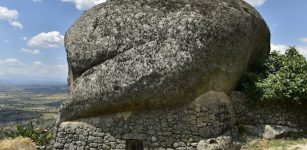 Ancient Village Of Monsanto, Miraculously Balanced Giant Boulders And Knights Templar Connection
Civilizations | Dec 20, 2018
Ancient Village Of Monsanto, Miraculously Balanced Giant Boulders And Knights Templar Connection
Civilizations | Dec 20, 2018 -
 What Were The Most Important Inca Laws That All Citizens Had To Respect?
Ancient History Facts | Aug 16, 2017
What Were The Most Important Inca Laws That All Citizens Had To Respect?
Ancient History Facts | Aug 16, 2017 -
 Why Did Ancient Egyptian Scribes Face Serious Health Risks?
Archaeology | Jun 27, 2024
Why Did Ancient Egyptian Scribes Face Serious Health Risks?
Archaeology | Jun 27, 2024 -
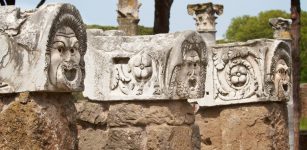 Ostia Antica – Unique Ancient Harbor City In The Suburbs Of Rome
Civilizations | Nov 29, 2018
Ostia Antica – Unique Ancient Harbor City In The Suburbs Of Rome
Civilizations | Nov 29, 2018 -
 Unique 1,600-Year-Old Gold Bead Found By Teenager In Jerusalem’s City Of David
Archaeology | Feb 9, 2023
Unique 1,600-Year-Old Gold Bead Found By Teenager In Jerusalem’s City Of David
Archaeology | Feb 9, 2023 -
 Settlement Of Europe: Result Of Several Migration Waves By A Single Population – Study
Archaeology | Jul 17, 2020
Settlement Of Europe: Result Of Several Migration Waves By A Single Population – Study
Archaeology | Jul 17, 2020 -
 Large 3,400-Year-Old Mittani Empire-Era City Emerges From The Tigris River In Iraq
Archaeology | May 30, 2022
Large 3,400-Year-Old Mittani Empire-Era City Emerges From The Tigris River In Iraq
Archaeology | May 30, 2022 -
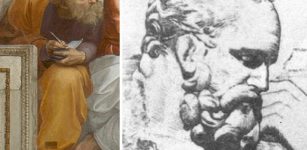 Anaximander Of Miletus: Father Of Cosmology, Pre-Socratic Greek Philosopher Who Discovered Equinox, Solstices And Gnomon
Featured Stories | Mar 7, 2019
Anaximander Of Miletus: Father Of Cosmology, Pre-Socratic Greek Philosopher Who Discovered Equinox, Solstices And Gnomon
Featured Stories | Mar 7, 2019 -
 Astronomer Johannes Kepler Saved His Mother From Being Burned As A Witch
Featured Stories | Jan 21, 2017
Astronomer Johannes Kepler Saved His Mother From Being Burned As A Witch
Featured Stories | Jan 21, 2017 -
 On This Day In History: Comet Donati First Observed By Italian Astronomer – On June 2, 1858
News | Jun 2, 2016
On This Day In History: Comet Donati First Observed By Italian Astronomer – On June 2, 1858
News | Jun 2, 2016 -
 Scientists Unravel The Mystery Of The Alexander Sawney Bean Legend & Cave-Dwelling Cannibals In Scotland
Myths & Legends | Sep 24, 2015
Scientists Unravel The Mystery Of The Alexander Sawney Bean Legend & Cave-Dwelling Cannibals In Scotland
Myths & Legends | Sep 24, 2015 -
 Carbon-12 – A Critical Gateway To The Birth Of Life Is Produced In Stars – Did Life Come From Cosmos?
Human Beginnings | May 23, 2022
Carbon-12 – A Critical Gateway To The Birth Of Life Is Produced In Stars – Did Life Come From Cosmos?
Human Beginnings | May 23, 2022 -
 Rare 2,300-Year-Old Tomb Of Greek Courtesan Found In Jerusalem Burial Cave
Archaeology | Sep 28, 2023
Rare 2,300-Year-Old Tomb Of Greek Courtesan Found In Jerusalem Burial Cave
Archaeology | Sep 28, 2023 -
 Kukulkan (Quetzalcoatl): Feathered Serpent And Mighty Snake God
Featured Stories | Feb 7, 2017
Kukulkan (Quetzalcoatl): Feathered Serpent And Mighty Snake God
Featured Stories | Feb 7, 2017 -
 Why Is The Hungry Ghost Festival Celebrated In August?
Ancient Traditions And Customs | Aug 12, 2019
Why Is The Hungry Ghost Festival Celebrated In August?
Ancient Traditions And Customs | Aug 12, 2019 -
 Mythical Biringan City – Invisible Portal To Another World Where Dangerous Engkantos Reside
Featured Stories | Feb 2, 2018
Mythical Biringan City – Invisible Portal To Another World Where Dangerous Engkantos Reside
Featured Stories | Feb 2, 2018 -
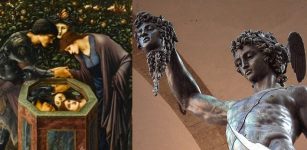 Perseus – Courageous Adventurer Who Fulfilled A Prophecy
Featured Stories | Jul 31, 2018
Perseus – Courageous Adventurer Who Fulfilled A Prophecy
Featured Stories | Jul 31, 2018 -
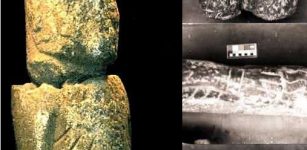 Inscription On Pokotia Monolith Reveals Sumerians Visited Peru Thousands Of Years Ago
Ancient Symbols | Sep 1, 2015
Inscription On Pokotia Monolith Reveals Sumerians Visited Peru Thousands Of Years Ago
Ancient Symbols | Sep 1, 2015 -
 Mysterious Skeleton Of Unusual Lady Anchoress Of York Barbican Discovered By Archaeologists
Archaeology | Feb 7, 2023
Mysterious Skeleton Of Unusual Lady Anchoress Of York Barbican Discovered By Archaeologists
Archaeology | Feb 7, 2023 -
 Roman Naval Base of Haltern in Germany Was Rebuilt Four Times 2,000 Years Ago
Archaeology | May 8, 2023
Roman Naval Base of Haltern in Germany Was Rebuilt Four Times 2,000 Years Ago
Archaeology | May 8, 2023

